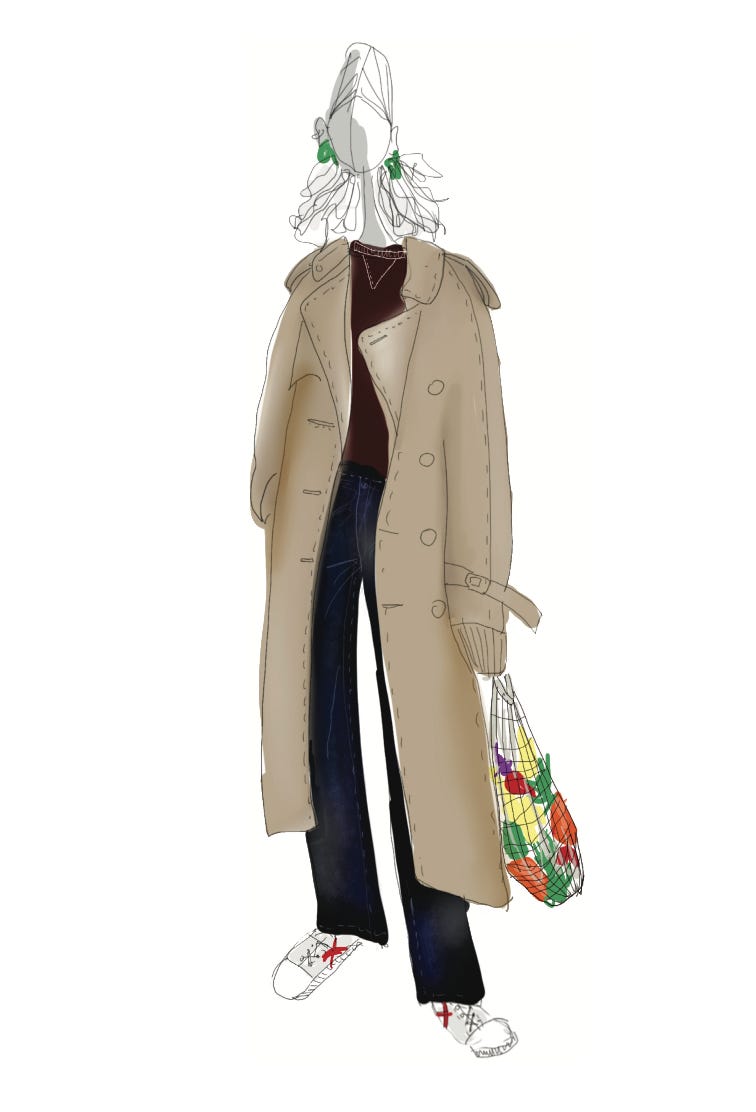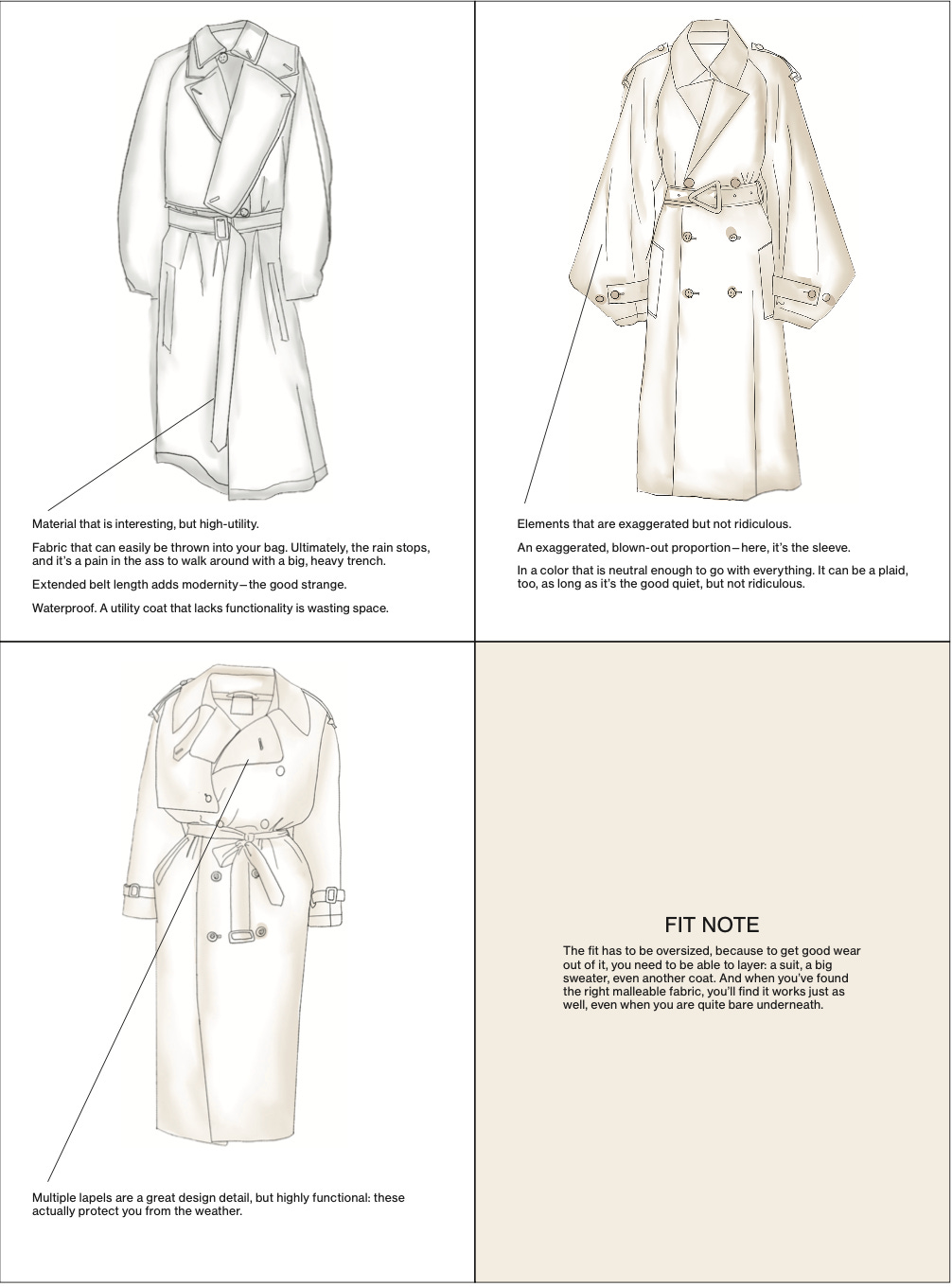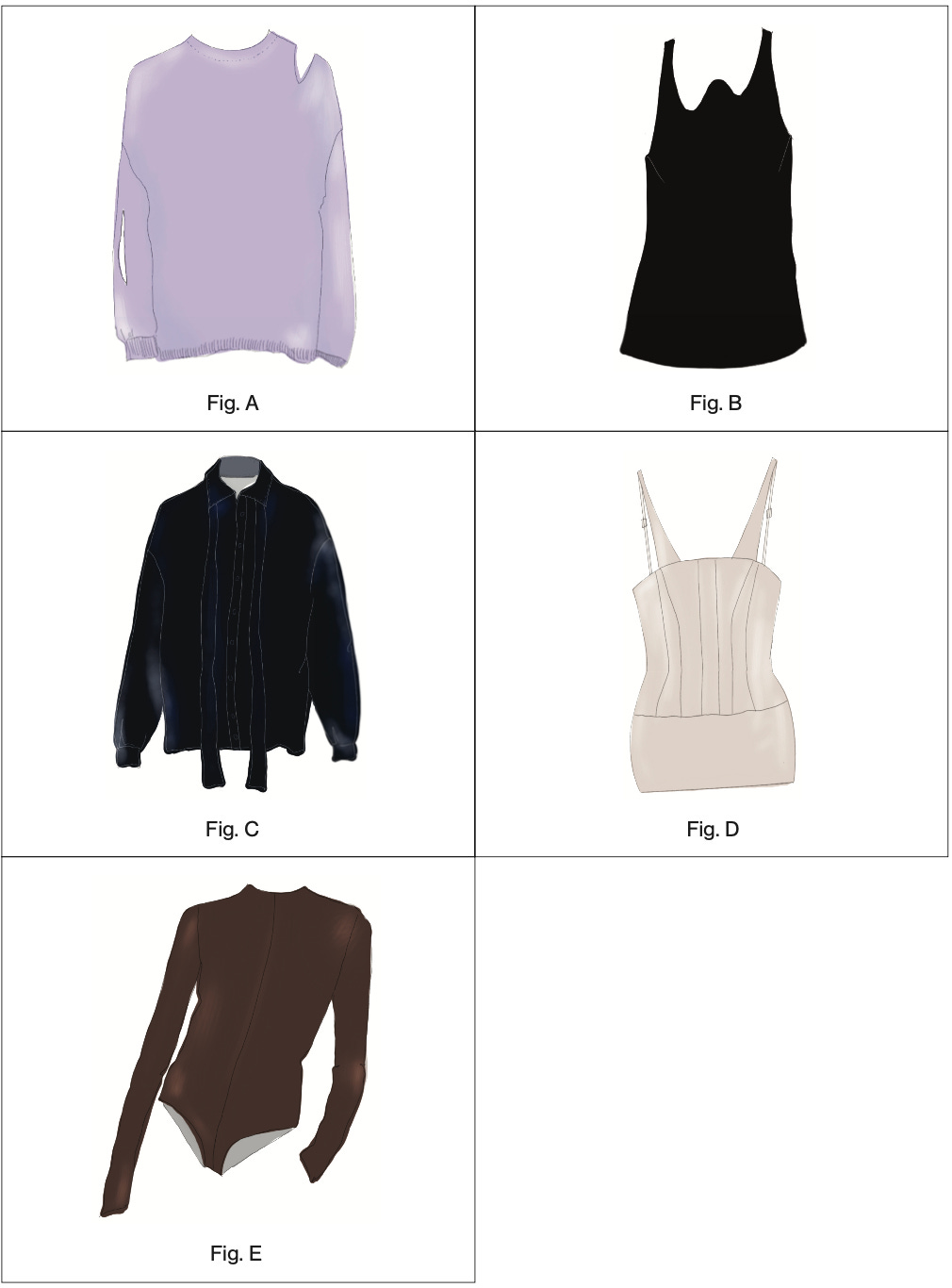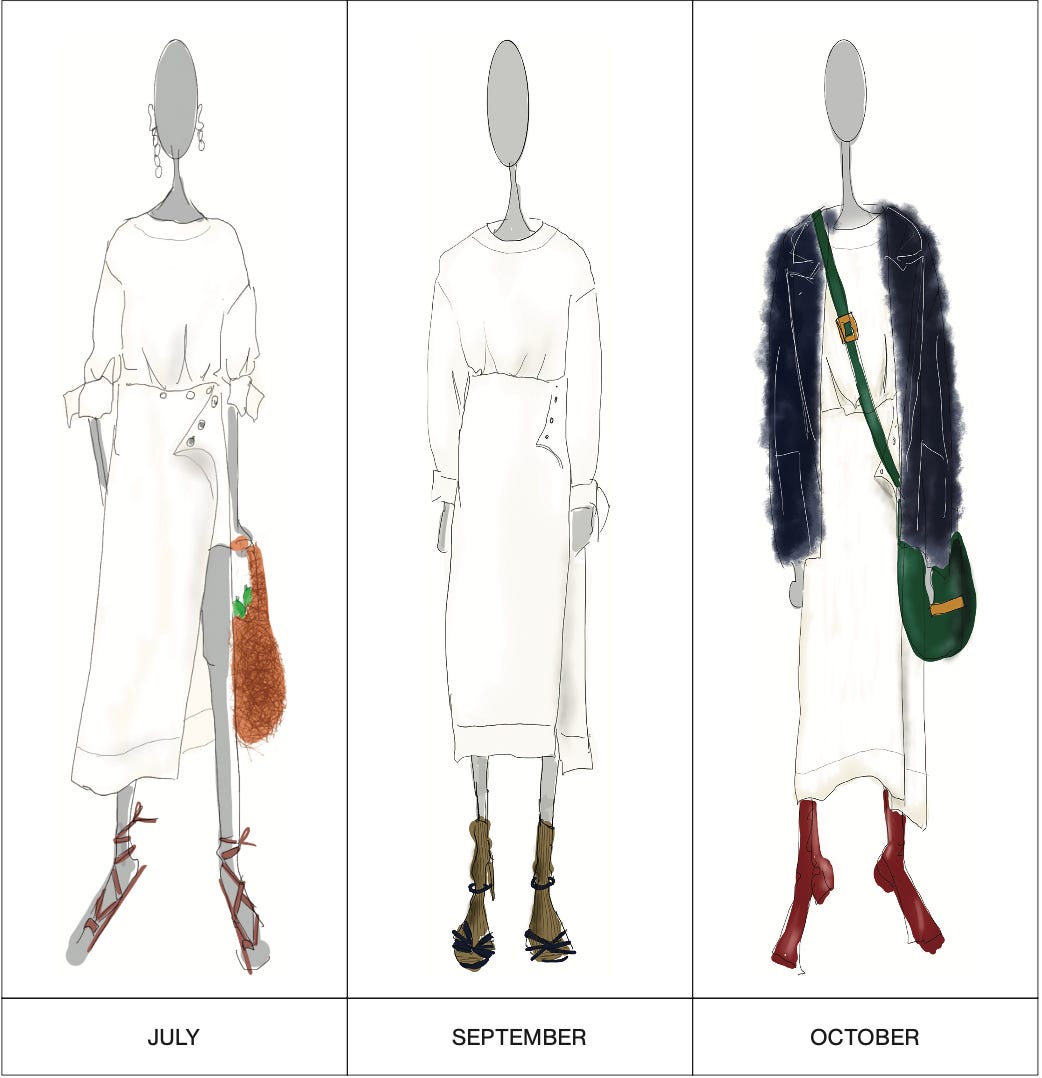02: Principles For The Creative Pragmatist
The fundamental truths or propositions that serve as the foundation for a chain of reasoning.
I debated whether or not to call what I’ve developed here “rules.” Rules seem so strict, so inflexible, so didactic. But rules are also made to be broken. What I’ve put together really isn’t about setting up rules to break; it’s more about developing an understanding of why you’ve always intuitively felt a certain way, but couldn’t put your finger on why. Once you appreciate this, you will start to form your own set of rules, guidelines, whatever you want to call it. When you’ve developed them, you’ll be smarter about how you shop and more confident when you get dressed. Ultimately, we are all individuals here, even though we share a common mindset.
In the past two years of working through my ideas on what defines a Creative Pragmatist, or CP, one thing has become abundantly clear: many of you love rules! You like the guardrails and the clarity of knowing when you have overstepped them, or you simply find comfort in the concision of a “rule book.” But I’m going to simply call these our “principles”: the fundamental truths or propositions that serve as the foundation for a chain of reasoning. When you’re able to reason—to think about why you do what you do—then ultimately, you’ll make the best choices for you.
CMC: Chill Modern Classic
Words are helpful in explaining a concept, but visuals make it sink in. The idea is that if each item you wear has all three elements—chill, modern, classic—then you will feel like yourself. Effortless, but refined. Modern, but approachable. Classic, but curious.
Of course, not every item you own or buy will strike all three elements. But if you set this as the goal, there is a strong chance that anything you buy that bears these elements will be the items you really wear, over and over.
DISSECTING THE OUTFIT
Each individual piece in the outfit has elements of chill, modern, and classic. Styled together, they exude the ideal CMC balance. It helps to step back and look at the items critically.
VISUALIZED
Look closely. Every item here has the balance of CMC. Now, instead of referring to your clothing preferences as “nots”—as in, “I want the top to be sheer, but not overly sexy. I want it to have a high neckline, but not be too conservative. I want it to be effortless, but not sloppy”—you can just say, “I want it to be chill, modern, and classic.” It’s far easier to communicate your thoughts in terms of what you want versus what you don’t want.
BASICS: THE FUNDAMENTALS
Now that you understand CMC, it’s time to talk about what fundamentally needs to be in your closet. Anything else would be putting the cart before the horse. If you want to find the items that will fuel your wardrobe and make you feel interesting and clever without overtaking your style, then it’s important to understand the role CMC plays. CMC is the overarching criteria any item needs to meet before it’s even considered as a potential foundation piece in your wardrobe.
Below is a list of my core needs. Anything that could be deemed a “basic”—a piece that meets the principles on which my closet is built—must link up with at least three out of four of these criteria. My core needs may be different than yours, but that should come as no surprise, since we are all individuals. One of my nonnegotiables is a point of view. Your basics should never be, well ... basic. When they are, you feel basic, too. Think about it this way: if your basics play it safe and look average, and the very point of a basic is to be worn a lot, then that means you’ll spend a lot of your life feeling pretty average. So, more than anything, the items that you consider to be your basics should have a strong point of view.
At the risk of stating the obvious, your basics will differ depending on your lifestyle. Our determination of what is or is not functional can vary widely based on our jobs, lifestyles, climates, etc. So, before I dive into which styles I think everyone needs in their closet, you first need to create the lens through which you will make these decisions.
The key elements are as follows:
THE PERFECT TRENCH
What makes one trench the perfect trench over another? Finding the perfect basic doesn’t mean that it does every job. The perfect basic works 80% of the time on its own, and 100% of the time with the right accessories. When a trench embodies all the elements below, you will want to wear it a lot, because every time, you will feel special—but not overly so. A bit discreet. Just pure style.
THE PERFECT TEE
I can best articulate what the perfect cotton tee is by showing you what it absolutely is not. It’s easy to find; you just think it isn’t because there are a lot of bad ones out there distracting you, disguised as fashion. Good ones exist; you just have to know the shapes that you’re looking for. The bad tees all have a lack of refinement. This is important to avoid, because the cotton fabrication is already ticking the “chill” box in the CMC equation. The tee-shirting should be balanced out with a point of view, a sense of modernity. The simplicity of an exaggerated neckline, high or low, cut in or with shoulder pads adds interest. Consequently, you feel interesting when wearing the good tee. See?
THE PERFECT TOP
The perfect tops in my closet can be worn with over eighty percent of my skirts or pants. They don’t sit in waiting for that pant that hits at exactly that perfect place so that it works. They don’t stare at you annoyingly because the fabrication
is always fighting with all the other materials next to them. They’re friendly guys that can hang with just about everyone. They’re a security blanket when you need a sure thing to wear. Each of these tops have these three elements in common:
PDW: PLAY, DINNER, WORK
The hardest-working items in your closet should go from play to dinner to work. Not everything should do this—we can be real here—but the ones that do will get you the most mileage. These are the items that never make you angry. You’ll never curse at them in regret for the money spent. When you travel, they’re the first items that go in the suitcase. They become your steady dream partner that is ever so malleable, depending on what you pair them with.
MY PERFECT PANT: THE CHECK MARKS
Not every pant will be the ultimate Play/Dinner/Work option. But when you have that pant, it is style nirvana. The hardest worker in your closet, they’ll make you happy every time you see them: pants without regrets.
MY PERFECT BLAZER: ALL THE CHECK MARKS ARE THERE
I have more blazers than tops in my closet; they are my go-to. And those that move seamlessly throughout my day get the most of my love. They never go to the resale store. They are my security blanket and my confidence-builder.
MY HARDEST WORKING TOP
There are always those three or four tops in the closet that go into the highest rotation, and it’s for real reasons linked to functionality. It’s not because it’s the prettiest, or the one that you bought on vacation that has great memories attached to it. Those are really good things, but they don’t make a top great. What makes it great is when it works its ass off for you— like this one.
12 MO’ER: THE ART OF THE LAYER
For years, magazines treated layering as a novel experiment in fashion; a trend—here for a while, then gone, only to come back again. In my opinion, when I really admire someone’s style, inevitably I see that they have mastered the art of layering, not hype. You can tell it’s an effortless part of their style by the way they dress. And every time, what you find is that each layered piece serves a function.
If you approach layering from a purely pragmatic point of view first, the style will follow. Ultimately, style is heavily intertwined with how comfortable you are in your environment. And layering gives you that comfort, because ultimately it serves several functions.
In a perfect world, each item you add to your closet should serve as a layering piece to combine with items you already own. That’s how you build a functioning closet. It’s the very thing that will ensure you always have something to wear instead of feeling the utter opposite. The key to great layering is that the core piece needs to be in a fabrication that can transition through all 12 months of the year. Once you have that nailed, everything else has license to be as furry, cozy, or transparent as it wants to be, because the solid base is there.
12 MO’ER
The most versatile fabrications can be worn 12 months out of the year (generally speaking) and serve as your base to be layered or accessorized, depending on the month.
FABRICATIONS CHECKLIST





















